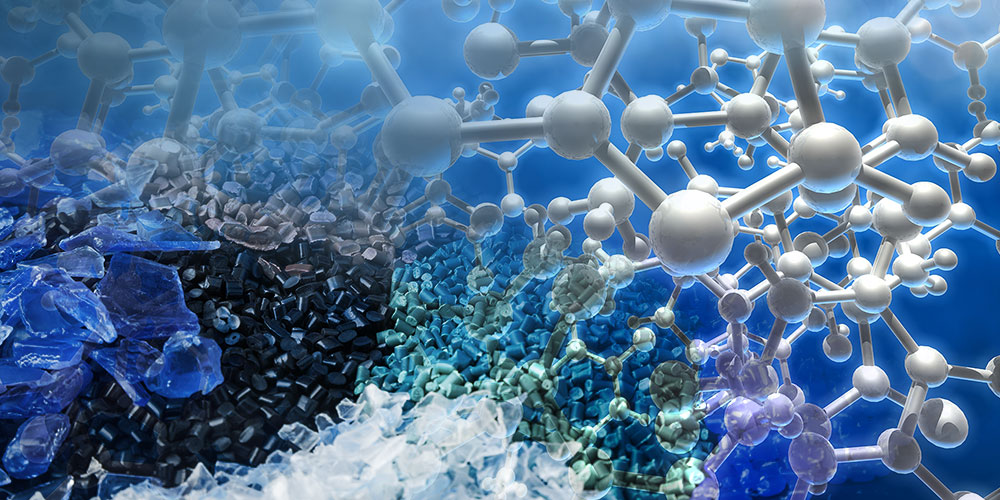

固体DNP-NMRのご紹介
Drug discovery and development relies on the understanding of the intricate structures of chemical compounds. The obtainment of knowledge of certain compounds’ structures can be hindered due to the challenging study of their solid state.
Solid-state nuclear magnetic resonance (NMR) imaging has provided much-needed evaluation of solid-state pharmaceuticals, assisting in the understanding of chemical properties and therapeutic efficacy during drug development and further advancing the overall practice of medicine.
Solid-state NMR is commonly used to analyze drug-drug interactions as well as changes occurring during pharmaceutical formulation. Additionally, NMR provides a thorough look into compounds’ organic structures. The same sample can be reexamined reiteratively since solid-state NMR is non-destructive.
Although NMR remains a potent tool for examining solid-state medicines, it’s notoriously insensitive due to the small magnetic moment of the studied nuclei producing small polarization of the nuclear reservoir. Also, NMR typically requires more samples compared with other imaging techniques.
What is DNP-NMR?
To overcome the sensitivity restrictions posed by standard NMR spectroscopy, the use of dynamic nuclear polarization (DNP) NMR has become an increasingly adopted option. DNP-NMR can be used to bolster NMR signal intensities by transferring Boltzman polarization of the electron spin reservoir.
In addition to boosting the signal intensity, DNP-NMR also significantly accelerates data collection rate during NMR experiments, thereby providing more in-depth and quicker evaluation of the solid state of pharmaceuticals. Thus, DNP-NMR has expanded research in regards to the structural study of pharmaceutical-grade preparations.
Mechanisms: Brief Overview
Spin polarization transfer from electrons to nuclei results in DNP; however, it can also be caused by producing unpaired electrons from radiation damage in solid compounds. Polarization transfers can occur spontaneously via electron-nuclear cross relaxation when electron spin polarization diverges from equilibrium.
One mechanism, the thermal mixing mechanism, involves multiple electrons spins in the polarization transfer. The solid effect mechanism, however, includes magnetization transfer from one electron.
DNP-NMR Spectrometers: Instrumentation
The main components of a high-frequency DNP spectrometer system are as follows:
- Gyrotron oscillator (microwave source)
- NMR probe
- Transmission line (corrugated waveguide)
Probe
DNP-NMR studies that use high-frequency microwave irradiation require mechanical rotation of the sample rotor and the capability to apply B1 fields at both the electron and nuclear Larmor frequencies. Specifically, the probe excites the nuclear spins and detects the NMR signal. The NMR probe is placed into the magnetic field at its center, and the sample is then inserted in the probe to conduct the study.
EPR probes contain large quality factor values that enable the utilization of lower-power microwaves, creating robust B1 fields near the Larmor frequencies. In addition to containing the hardware that controls the sample temperature, the probe also holds the radiofrequency coils that are “tuned” at frequencies that are specific for the nuclei in a given magnetic field.
The Bruker DNP-NMR spectrometer provides the LT MAS Probe and 1.9 mm DNP MAS Probe, both of which support low sample temperatures for successful transfer of polarization from electron to nuclear spins.
Gyrotron Oscillators
The gyrotron oscillator of a DNP-NMR system generates high-power microwave radiation. An annular cathode launches the electron beam and advances it through a superconducting magnet. The beam is compressed when it moves through a vacuum tube and to a resonant cavity. There, it converts transverse kinetic energy into microwaves.
Contrary to slow-wave sources that can be weak in their generation of high levels of power and high frequencies, gyrotrons produce fast-waves that are more suitable for high-field DNP.
Bruker’s gyrotron provides a custom-designed gyrotron tube, control system, and superconducting magnet. The system ensures high-quality microwave beam for reliability and stability in solid-state NMR experiments.
Transmission Line
The transmission line links the gyrotron to the NMR probe, an essential instrument component of DNP-NMR spectrometer systems. Circular, corrugated waveguides are typically used to carry THz power to the sample.
Bruker’s DNP-NMR Spectrometers
創薬および医薬品開発では、化合物の複雑な構造を理解することが重要です。しかし、化合物によってはその固体状態の構造を知ることが困難であることがあります。
固体核磁気共鳴(NMR)イメージングは、固形の医薬品の評価を可能にし、医薬品開発における化学的特性や治療効果の理解を助け、医療の発展に貢献しています。
製薬分野の固体NMRは、薬物相互作用や製剤工程で起こる変化の解析に一般的に用いられます。また、NMRは有機化合物の構造を詳細に調べることができます。固体NMRは非破壊であるため、同じサンプルを繰り返し測定することができます。
NMRは、固体状態の医薬品を調べるための強力なツールですが、観察対象となる原子核の磁気モーメントが小さいために分極が小さく、感度が低いことが知られています。また、他のイメージング技術と比較して、NMRでは一般的により多くのサンプル量を必要とします。
DNP-NMRとは?
NMR分光計の感度の制約を克服するために、動的核分極(DNP)NMR法が用いられるようになってきました。DNP-NMRは、電子スピンのボルツマン分極を核スピンに移動させることで、NMRの信号強度を増大させることができます。
DNP-NMRは、信号強度を増大するだけでなく、NMR測定のデータ収集速度を大幅に向上させることで、医薬品の固体状態をより深く、より迅速に評価することができます。このように、DNP-NMRは医薬品の構造研究に大きく貢献しています。
概要:メカニズムについて
DNPは、スピン分極を電子から原子核へと移動する結果起こりますが、同様のことが、固形物の放射線損傷による不対電子の生成によっても起こりえます。分極移動は、電子のスピン分極が平衡状態でなくなった時に、電子と原子核の交差緩和によって自然に起こります。
メカニズムの1つである熱混合では、分極移動に複数の電子のスピンが関与します。一方、固体効果メカニズムでは、1つの電子から磁化の移動が行われます。
装置:DNP-NMR分光計
高周波DNP分光システムの主な構成は以下です。
- ジャイロトロン発振器(マイクロ波源)
- NMRプローブ
- 伝送ライン(コルゲート導波管)
プローブ
高周波マイクロ波を用いたDNP-NMRでは、サンプル・ローターを圧縮空気で回転させ、電子と核のラーモア周波数のB1磁場を照射する機能が必要です。さらに具体的には、プローブで核スピンを励起し、NMR信号を検出します。NMRプローブは、が磁場の中心に設置され、試料をプローブに挿入して測定を行います。
電子スピン共鳴のプローブは、品質係数の値が大きいため、低出力のマイクロ波を利用することができ、ラーモア周波数に近いしっかり確実なB1磁場を作ることができます。プローブには、試料の温度を制御するハードウェアに加えて、磁場中の原子核に固有の周波数に「チューニング」された高周波コイルも搭載されています。
ブルカーのDNP-NMRは、3.2 mm LT MAS Probeと1.9 mm DNP MAS Probeを利用できます。電子スピンから核スピンへの十分な分極の移動を行うためにサンプルを低温に保ちます。
ジャイロトロン発振器
DNP-NMRシステムのジャイロトロン発振器は、高出力のマイクロ波を発生させます。電子ビームは、環状のカソードから発射され、超電導磁石を通過します。電子ビームは圧縮され、真空管を通って共振キャビティに到達します。ここで、横方向の運動エネルギーをマイクロ波に変換します。
高出力と高周波数の生成に弱点がある低速波(slow-wave)のソースとは逆に、ジャイロトロンは高磁場DNPにより適した高速波(fast-wave)を生成します。
ブルカーのジャイロトロンは、カスタム設計されたジャイロトロン管、制御システム、超伝導磁石で構成されます。このシステムは、固体NMR測定の信頼性と安定性のために、高品質のマイクロ波ビームを保証します。
伝送ライン
伝送ラインはジャイロトロンとNMRプローブをつなぐもので、DNP-NMR分光器には欠かせない部品です。テラヘルツ波のパワーをサンプルに伝えるために、円形の波形導波管が一般的に使用されます。
References
ブルカーのDNP-NMR
ブルカーのDNP-NMR装置は、化合物の種類を問わず、固体NMR測定における感度の向上と測定時間の短縮を実現します。洗練された装置は、電子スピンから核スピンへの分極移動により、医薬品、材料科学、生物学といった分野のNMRによる化合物測定を改善することができます。
また、Bruker DNP-NMR装置のジャイロトロン・システムでは、263GHz、395GHz、527GHzのマイクロ波を照射することで、NMR信号を20倍から200倍に増大することができます。さらに、このユニークな分光計は長時間の測定が可能であり、時間や安全性に制限されることなく固体の研究を進めることができます。
参考文献:
- Barnes AB, Paëpe GD, van der Wel PC, et al. High-Field Dynamic Nuclear Polarization for Solid and Solution Biological NMR. Appl Magn Reson. 2008;34(3-4):237-263.
- Ravera E, Luchinat C, Parigi G, et al. Basic facts and perspectives of Overhauser DNP NMR. J Magn Reson. 2016;264:78-87.
- Rosay M, Blank M, Engelke F, et al. Instrumentation for solid-state dynamic nuclear polarization with magic angle spinning NMR. J Magn Reson. 2016;264:88-98.
- Akbey Ü, Oschkinat H. Structural biology applications of solid state MAS DNP NMR. J Magn Reson. 2016;269:213-224.0


